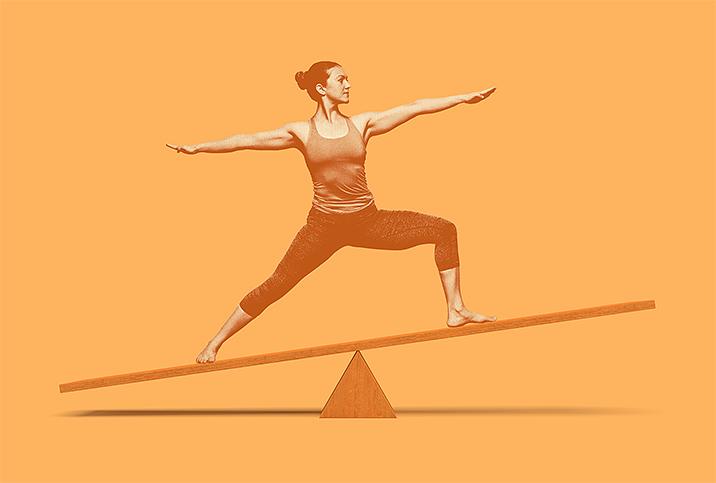Balance Your Hormones With Yoga

Most of us don't spend much time thinking about our endocrine system, but maybe we should—it certainly exerts a considerable amount of control over our lives. The endocrine system is made up of glands that produce hormones which affect many of our bodily functions, including respiration and reproduction with many stops in between.
The various glands and the hormones they secrete can fall out of balance for many reasons. Age, disease, medication, dietary issues, stress, the environment and genetics are just a few elements that have an impact on our hormones.
While medical intervention may be necessary to bring a particular hormone back in sync with the rest of the body, natural methods including diet and exercise can also influence the various components of the endocrine system.
Cultivating harmony and wellness
By its nature, yoga is particularly well-suited to encourage balance in many aspects of our lives. While there are many types of yoga—between eight and 13, depending on who you ask—they're all based on the same root practices of physical movement and poses, breath control, relaxation and meditation. Yoga's fundamental purpose is to cultivate harmony in the body and mind with the goal of enhancing overall wellness and fostering a sense of calmness.
Chronic stress puts the adrenal glands in overdrive, causing them to produce excessive cortisol and adrenaline. These hormones are responsible for the "fight or flight" response we experience during a crisis. In small doses, cortisol and adrenaline are beneficial. Adrenaline supplies a wave of energy that aids us in pushing through a stressful or dangerous situation (think of the parent who lifts an automobile to free their trapped child). Cortisol, on the other hand, helps the body cope with stress. Chronic stress keeps the adrenals pumping out adrenaline and cortisol unabated, causing problems such as interruptions in the sleep cycle, depression and heart disease.
Yoga helps to reduce stress response, causing cortisol levels to dip. It encourages the pineal gland in the brain to increase the production of melatonin, which helps your sleep cycle.
All types of yoga enhance health and reduce stress response, but restorative yoga postures have been recognized as being the best-suited to nudging hormones to healthy levels.
What is restorative yoga?
While most types of yoga focus on stretching, the poses (or asanas) used in restorative yoga are designed to release tension in the muscles and gently stimulate the organs. Fewer poses are used in a restorative yoga session compared to other types, and they are held longer—sometimes five minutes or more—allowing you to sink into deeper relaxation.
The poses promoted in restorative yoga require various props—such as blankets, blocks, bolsters and eye pillows—but a newbie doesn't have to invest a small fortune to experiment with this grounding technique. If you are trying restorative yoga at home for the first time, it's easy to improvise with items commonly found around the house. Folded blankets and pillows can substitute for a bolster. A washcloth or scarf works perfectly well as an eye pillow.
The real beauty of restorative yoga is that most people can partake. While you might need a certain fitness level to practice some of the more strenuous types of yoga (think power or aerial yoga), restorative yoga is friendly to people of any fitness level. The muscles are not engaged. Instead, they are supported in a way that encourages relaxation. Still, if you live with chronic debilitating health issues or joint problems, you will want to check with your physician before getting started.
In a world obsessed with quick fixes that often aren't effective, maybe the best life hack for chronic stress is to slow down and allow our bodies the chance to heal themselves. If you're ready to jump off the stress treadmill and try a little self-care, restorative yoga may be a good place to start.


















